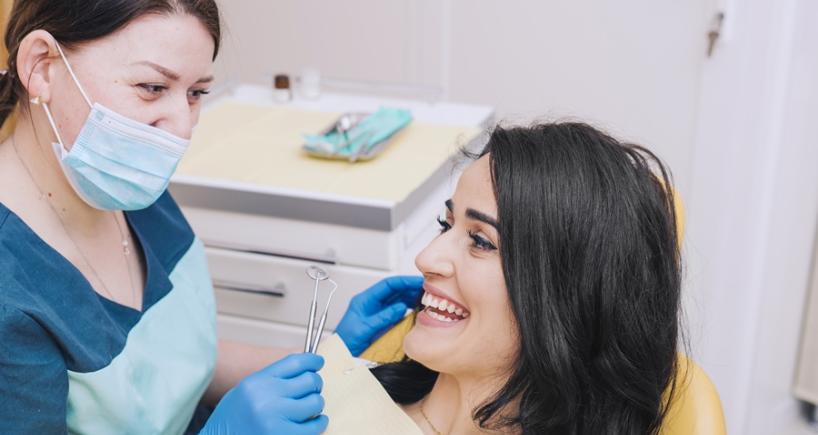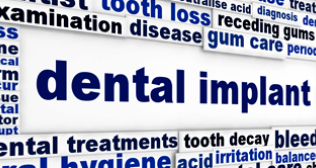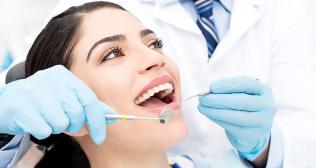
Common Periodontic Procedures and Treatments
Introduction
When people think of dentistry they often focus on teeth. However, dentistry encompasses much more than just teeth which also includes healthy gums as equally important. Healthy gums look like coral pink to slightly darker, are tightly bound to the jawbone, sealing and protecting the tooth roots.
The dental surgeon who provides periodontal services for maintaining healthy gums is called a periodontist. They provide various treatments for gum conditions to enhance the appearance of gums. In this blog let us explore more about periodontic conditions and their treatment.
Periodontal conditions
These are the group of inflammatory disorders that impact the tissues surrounding and supporting the teeth. They develop through complex interaction between harmful bacteria in the mouth and body’s immune response. These disorders range from simple gum inflammation, known as gingivitis, to more severe forms like periodontitis, which involve the breakdown of the underlying bone and connective tissue. As the disease progresses, it can result in deeper periodontal pockets, loss of alveolar bone, tooth movement, drifting, and eventually tooth loss. Early detection and timely treatment and follow-up are crucial for effectively managing these conditions and ensuring the long-term health of the teeth.
Symptoms
In the early stages of periodontal disease, the clinical signs and symptoms may be mild or even absent. Several symptoms may become apparent as the condition progresses including swollen or puffy gums, gums that are bright red, dark red, or dark purple, and gums that feel tender when touched. Other signs include gums that bleed easily, a pink-tinged toothbrush after brushing, and spitting out blood when brushing or flossing.
Consistent bad breath, pus between the teeth and gums, loose teeth, or tooth loss can also indicate periodontitis. Painful chewing, the development of new spaces between teeth that appear as black triangles, receding gums that make teeth look longer, and changes in the way teeth fit together when biting are additional symptoms of advanced periodontal disease.
Risk factors
Several factors contribute to the prevalence of periodontitis. Some of them include
Smokers are three times more likely to develop periodontal disease and experience greater alveolar bone loss and tooth loss compared to non-smokers.
Poor Oral Hygiene: Poor oral hygiene promotes bacterial build-up and dental plaque, leading to periodontal disease.
Hormonal changes, especially during menstruation, ovulation, and pregnancy, can increase the likelihood of gingival inflammation and periodontal disease.
Diabetes is a major systemic risk factor for periodontal disease, contributing to periodontal ligament destruction and tooth loss. Diabetic patients with periodontitis have higher levels of inflammatory mediators, and periodontal treatment can significantly benefit diabetic management.
Certain medications, such as tricyclic antidepressants, antihistamines, and beta blockers, reduce salivary flow, increasing the risk of periodontal disease.
Stress reduces salivary flow, enhancing plaque formation and periodontal disease. It is linked with elevated levels of cortisol in gingival fluid and poor response to periodontal treatment.
Diagnosis of Periodontal Disease
Gum Examination: During a dental visit, the dentist or dental hygienist examines your gums for signs of inflammation. They use a tiny ruler called a “probe” to measure pockets around the teeth. In a healthy mouth, these pockets are usually between 1 and 3 millimeters deep. Deeper pockets can indicate periodontal disease.
Medical History Survey: The dentist asks questions about your medical history as certain risk factors like smoking or diabetes are significant contributors for such conditions.
X-Ray: Teeth and mouth X-rays are recommended as the images reveal any bone loss resulting from gum disease.
Referral to a Periodontist: If suspected of periodontitis the dental professional may refer you to a periodontist for precise diagnosis and treatment of gum disease.
Periodontists may provide additional treatment options beyond what your regular dentist provides.
Treatment of Periodontitis
The primary purpose of treatment is to control the infection. The approach of treatment vary based on the severity of gum disease:
Non-Surgical Procedures
Scaling and Root Planing (Deep Cleaning): A common non-surgical procedure which involves removing plaque and tartar from the tooth surfaces and below the gumline which promote healing and reduces inflammation.
The dentist will recommend regular a topical antibiotic in the form of oral-mouth-washing which is an effective way to get rid of bacteria. Also, this practice is assured of the elimination of the bacteria-infected area in the first period through the direct application of drugs under the gum.
Surgical techniques: In the case of challenging cases, surgery may be one of the options. These could include flap surgery, bone grafts, or soft tissue grafts.
Popular Searches :
Hospitals: Cancer Hospital in Delhi | Best Heart Hospital in Delhi | Hospital in Amritsar | Hospital in Ludhiana | Hospitals in Mohali | Hospital in Faridabad | Hospitals in Gurgaon | Best Hospital in Jaipur | Hospitals in Greater Noida | Hospitals in Noida | Best Kidney Hospital in Kolkata | Best Hospital in Kolkata | Hospitals in Rajajinagar Bangalore | Hospitals in Richmond Road Bangalore | Hospitals in Nagarbhavi Bangalore | Hospital in Kalyan West | Hospitals in Mulund | Best Hospital in India | | Cardiology Hospital in India | Best Cancer Hospital in India | Best Cardiology Hospital in India | Best Oncology Hospital In India | Best Cancer Hospital in Delhi | Best Liver Transplant Hospital in India
Doctors: Dr. Rana Patir | Dr. Rajesh Benny | Dr. Rahul Bhargava | Dr. Jayant Arora | Dr. Anoop Misra | Dr. Manu Tiwari | Dr. Praveer Agarwal | Dr. Arup Ratan Dutta | Dr. Meenakshi Ahuja | Dr. Anoop Jhurani | Dr. Shivaji Basu | Dr. Subhash Jangid | Dr. Atul Mathur | Dr. Gurinder Bedi | Dr. Monika Wadhawan | Dr. Debasis Datta | Dr. Shrinivas Narayan | Dr. Praveen Gupta | Dr. Nitin Jha | Dr. Raghu Nagaraj | Dr. Ashok Seth | Dr. Sandeep Vaishya | Dr. Atul Mishra | Dr. Z S Meharwal | Dr. Ajay Bhalla | Dr. Atul Kumar Mittal | Dr. Arvind Kumar Khurana | Dr. Narayan Hulse | Dr. Samir Parikh | Dr. Amit Javed | Dr. Narayan Banerjee | Dr. Bimlesh Dhar Pandey | Dr. Arghya Chattopadhyay | Dr. G.R. Vijay Kumar | Dr Ashok Gupta | Dr. Gourdas Choudhuri | Dr. Sushrut Singh | Dr. N.C. Krishnamani | Dr. Atampreet Singh | Dr. Vivek Jawali | Dr. Sanjeev Gulati | Dr. Amite Pankaj Aggarwal | Dr. Ajay Kaul | Dr. Sunita Varma | Dr. Manoj Kumar Goel | Dr. R Muralidharan | Dr. Sushmita Roychowdhury | Dr. T.S. MAHANT | Dr. UDIPTA RAY | Dr. Aparna Jaswal | Dr. Ravul Jindal | Dr. Savyasachi Saxena | Dr. Ajay Kumar Kriplani | Dr. Nitesh Rohatgi | Dr. Anupam Jindal |
Specialties: Heart Lung Transplant | Orthopedic | Cardiology Interventional | Obstetrics & Gynaecology | Onco Radiation | Neurosurgery | Interventional Cardiology | Gastroenterologist in Jaipur | Neuro Physician | Gynecologist in Kolkata | Best Neurologist in India | Liver Transfer |












